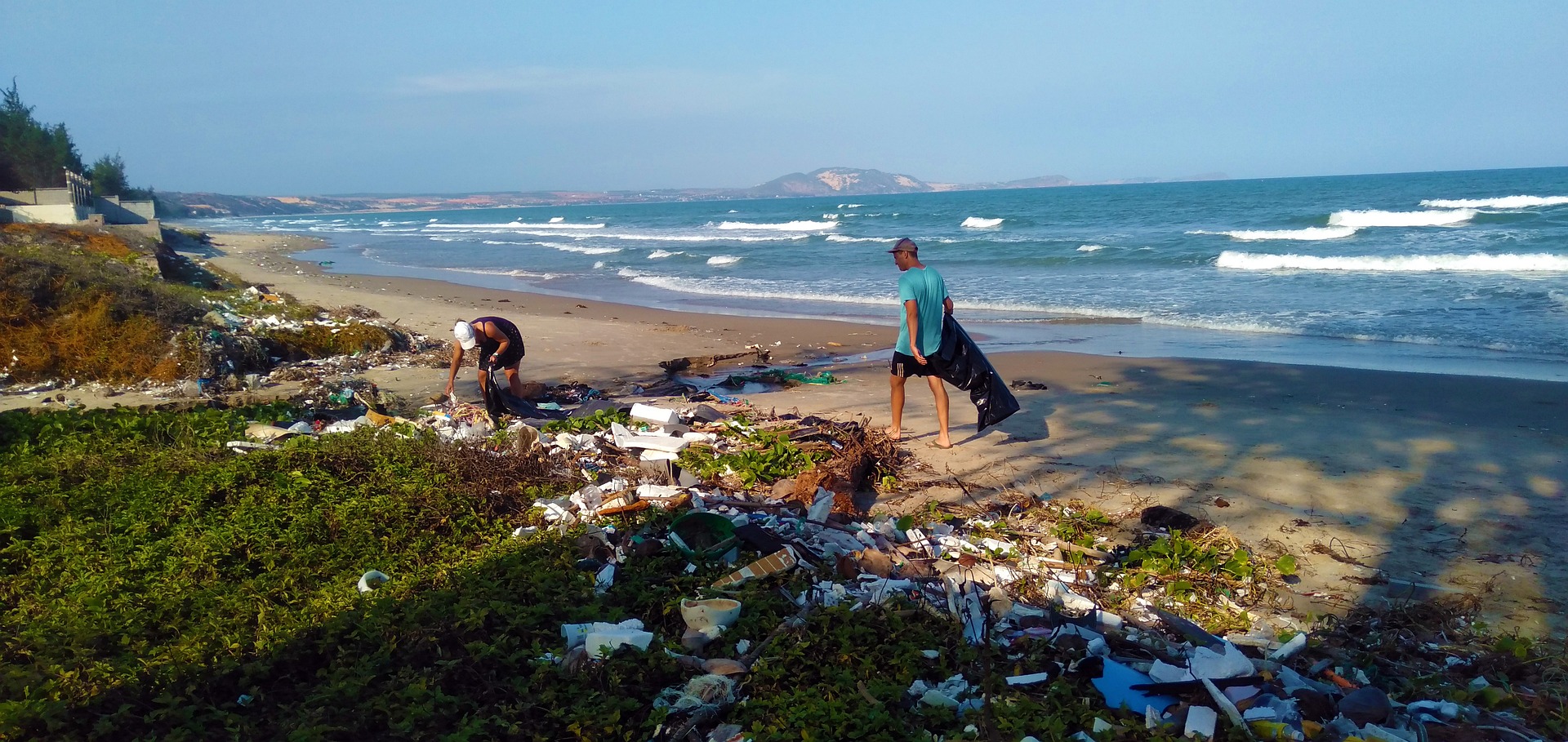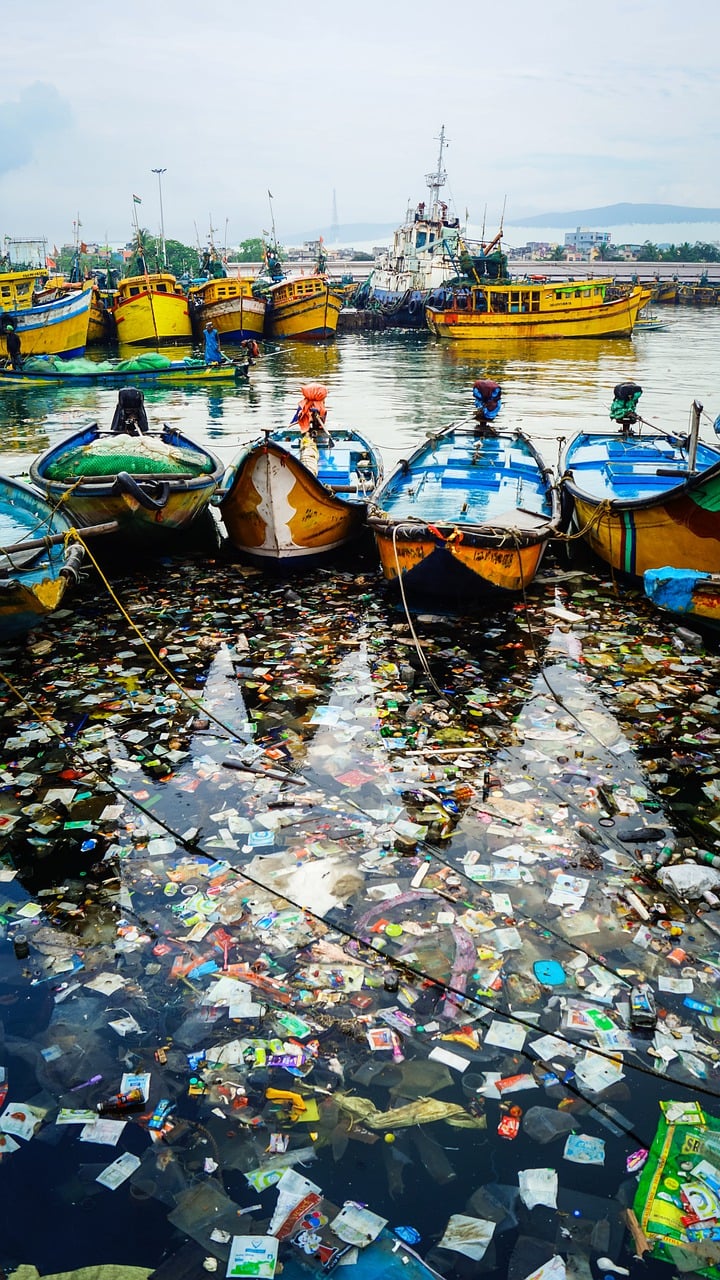We All Float – A Plastic Journey to The Ocean
Catrina Pangilinan; Gandhi de la Cruz; Karleen; Michelle Erazo; and Ruth

Introduction
Plastics are a huge concern because they are not biodegradable, and tons of them reach the ocean every day. Even though some efforts are being made to clean the oceans from plastics, these efforts have a very low impact because only 1% of the plastics that reach the oceans are in the spots being cleaned. To date, the mechanisms used to gather the plastics are of questionable reach and benefit. Alternatives to making the polymers of use again at a low cost without harming the environment might be awarded the prize of the century.
Topic Overview
According to IUCN (2021), “At least 14 million tons of plastic end up in the ocean every year, and plastic makes up 80% of all marine debris found from surface waters to deep-sea sediments. … Marine species ingest or are entangled by plastic debris, which causes severe injuries and death. … Plastic pollution threatens food safety and quality, human health, coastal tourism, and contributes to climate change.” Plastic waste kills seabirds and fish and is consumed by humans in the form of toxic microscopic particles, which are now found in all humans. It is a danger to human life because microplastics have been linked with cancer, reduced fertility, psychological illnesses, and birth defects (Moore , 2021).
For information on how to access the transcript for this video, see
Local and Global Perspectives
Plastic contamination in the Philippines continues to be an issue due to the absence of sterile landfills and severe limitations on building new ones. The Philippines has a high trash assortment rate among Southeast Asian nations; junk is not discarded as expected. The Philippines Alliance for Recycling and Material Sustainability (PARMS) claims that “70 percent of the Filipino population has no access to disposal facilities and sanitary landfills, causing waste to leak into the oceans.” (as cited in Fernandez, 2020). The Philippines has become one of the biggest generators of plastic pollution; its consumption of plastic reaches levels that are contrasted with countries with larger populations.
In one 2020 study, it was noted that 21 species of sea fish and freshwater water fish contained plastics, as a result of low recycling rates: while “China produced about 60 million [tons] of plastic waste … only 16 million [tons] of which was recycled.” (Lai, 2022). Lastly, The Indian Ocean holds 1.3 million pieces of plastic. In 2010, the Indian Ocean garbage patch was discovered in the Central Indian Ocean and is a result of the Indian Ocean Gyre. Both the Indus and Ganges Rivers are listed among the ten rivers with the highest level of pollution and both drain into the Indian Ocean.
“Rich countries produce much more plastic waste per person than poorer countries. Most produce 0.2 to 0.5 kilograms per person per day. This compares to 0.01kg in India or 0.07 kilograms in the Philippines (Plastic waste Generation). Even when we multiply by population, … rich countries generate a lot of waste.” In rich nations, practically all their plastic waste is burned, reused, or shipped off to overseas landfills. Developing nations will generally have less fortunate waste administration frameworks. Waste can be unloaded beyond landfills, and landfills that really do exist are in many cases open, releasing waste to the general climate (Ritchie, 2021).
Critical Analysis
Most plastic production worldwide has doubled in the last few years, and only a small fraction of that gets recycled; the rest is burned, buried, or ends up in the environment, including the sea. Jones (2022) explains that by 2050, there could be more plastic in the oceans, by weight, than fish according to some estimates. Therefore, cleaning up the oceans is one of the strategies to reduce waste, but this requires precision at the time of action because it could contribute to pollution and harm the fauna. In Benji Jones’ article, “Oops, cleaning the Great Pacific Garbage Patch was probably a bad idea”, he explains the misconception that might be occurring when we think that cleaning the ocean from plastics is generating a representative positive impact. According to the chief scientist at Oceana, “It’s like mopping up the spill when the spigot is still on” (as cited in Jones 2022). Jones critiques the method used by Ocean Cleanup. He explains that it is dangerous for marine species because it is similar to trawl fishing, and so poses the same problem of catching marine life by accident.
As such, other ways of cleaning the oceans should be considered, like coastal cleanups, which are an effective solution with a low negative impact on the environment. According to researchers, “In 2020, volunteers removed 5.2 million pounds of plastic from beaches around the world in a single day” (Jones, 2022), which is a tool to get plastic before it reaches the ocean. Even though some efforts are being made to clean the oceans from plastics, these efforts have had a very low impact. Therefore, all tools should be improved to work together to reduce waste and solve this problem with a lower impact on the environment.
Local and Global Solutions
One of the biggest dangers to ocean health nationwide is plastic waste. Plastic pollution in the ocean has a negative impact on sea turtles, whales, seabirds, fish, coral reefs, and a large number of other marine habitats and species. Plastic pollution also ruins attractive beaches, coastlines, and snorkeling and diving locations all over the world, even in far-off places like Midway Atoll. The issue of plastic waste can be solved by everybody , and millions of people all over the world are now taking the necessary steps to use less plastic.
A strategic and energy-efficient solution is required to clean the area, keeping the cleanup system and the plastic moving at different speeds. The Ocean Cleanup made artificial coastlines, focusing on the plastic where there is none. The system consists of a lengthy barrier in the form of a U-shape that directs the plastic into a retention zone at the other end. They keep the system moving at a slow forward speed. This prevents the plastic from reentering the environment. Another solution is the development of reliable new products such as sunglasses made from plastic collected from the Great Pacific Garbage Patch or processing it in another way. Funding & business models that have innovative new ideas in recycling can also help in saving the oceans.
Conclusion
Plastic Waste is harmful to marine life, human life, and our environment. Plastic does not break down like other organic waste but turns into microplastics that affect everyone. Although there are several ways to deal with plastic waste like the ones mentioned in this article, we need to stop plastic pollution because it is a widespread problem affecting human health as well as the health of marine species. Therefore, proper waste management of plastic is vital to avoiding the negative effects worldwide. Volunteers and different agencies across the globe have a major role to play in eliminating plastic pollution, which is very helpful to the environment.

References
Fernandez, H. A. (2020, June 10). Why plastic-clogged Philippines must face up to dearth of waste disposal and recycling. Eco-Business. https://www.eco-business.com/news/why-plastic-clogged-philippines-must-face-up-to-dearth-of-waste-disposal-and-recycling/
Hutchinson, B. (2022, February 24). 7 Solutions to Ocean plastic pollution. Oceanic Society. www.oceanicsociety.org/resources/7-ways-to-reduce-ocean-plastic-pollution-today/.
Jones, B. (2022, March 4). Oops, cleaning the Great Pacific Garbage Patch was probably a bad idea. Vox. Retrieved November 29, 2022, from https://www.vox.com/down-to-earth/22949475/ocean-plastic-pollution-cleanup
Lai, O. (2022, November 26). China’s plastic pollution crisis: Causes and solutions. Earth.Org. https://earth.org/china-plastic-pollution/
Marine Plastic Pollution. (2021, November 17). IUCN. https://www.iucn.org/resources/issues-brief/marine-plastic-pollution
Moore, S. (2021, July 29). Ocean pollution and human health. News Medical. https://www.news-medical.net/health/Ocean-Pollution-and-Human-Health.aspx
Ritchie, H. (2021, May 1). Where does the plastic in our oceans come from? Our World in Data. https://ourworldindata.org/ocean-plastics
Stanchak, J. (2019, February 14) Converting plastic waste into battery components. ACS Publications Chemistry Blog. https://axial.acs.org/2019/02/14/converting-plastic-waste-into-battery-components/
The Ocean Cleanup. (2019). theoceancleanup.com

